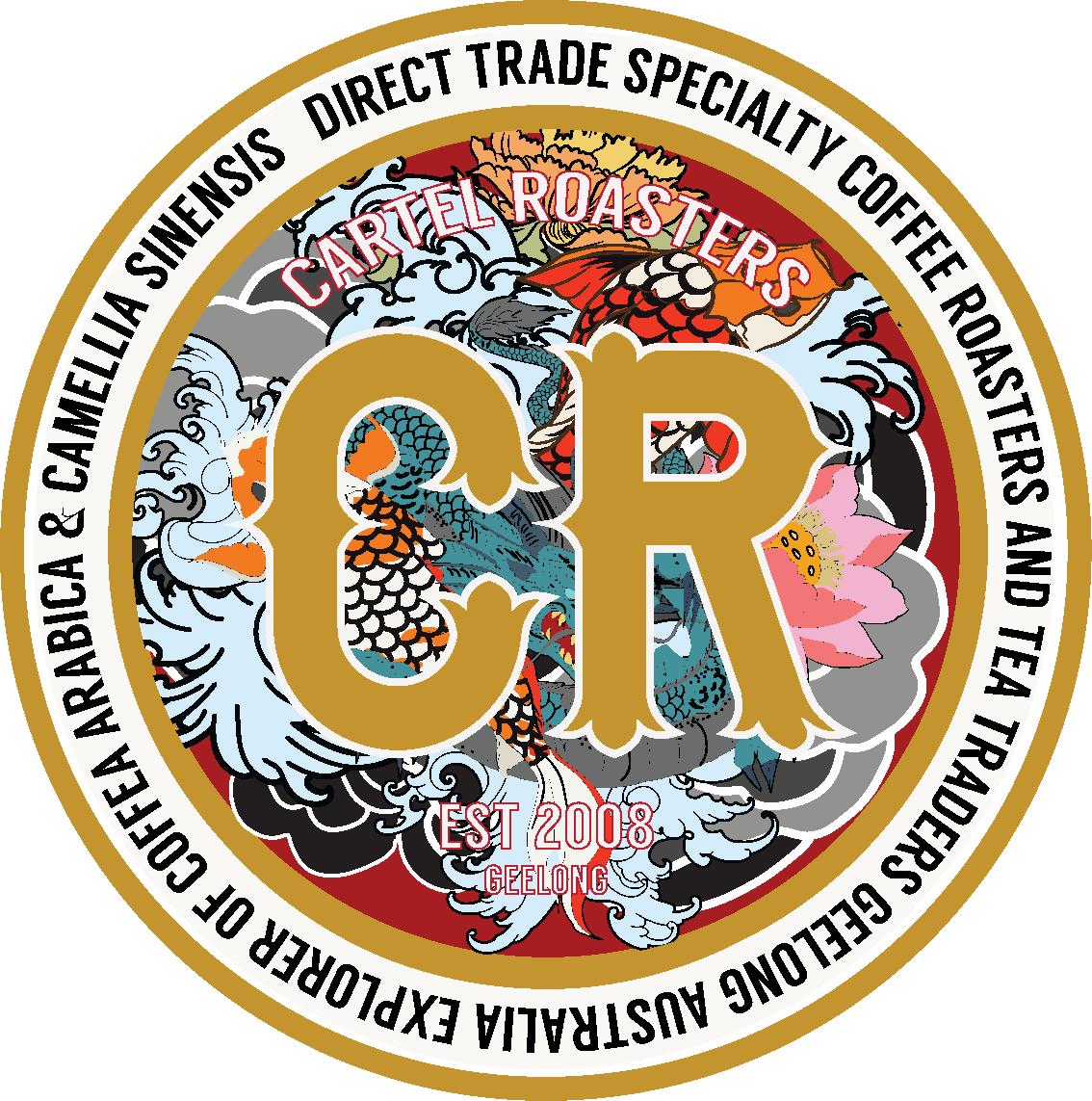Why do people cup ( cupping ) taste or evaluate anything? Well one only truly understands quality until one gets to experience what quality is. What i mean by this is that to understand what is the most floral,brisk or complex Tea or Coffee is one needs to analyze this next to simulour types of process or varieties of teas & coffees to understand which one has the strongest complex or positive or negative flavour attributes. I experience this daily having a specialty coffee and tea company, The amount of people that commonly say WOW how clean, fruity, sweet and nice that coffee or tea is quite common as we deal with very good quality products that have been analyzed from farm crop to cup to ensure the positive flavour attributes are found in the products we source and prepare everyday to our customers. If one is only used to consuming stale old tea & coffee and one gets to experience a Tea fresh from a farm or freshly roasted quality coffee next to this beverage the difference is noticeably different incredible and for many life changing.
Why do we ‘cup’ Tea or Coffee? Cupping is a process of tasting and evaluating the quality of coffee & loose leaf tea. Coffee cupping & Tea cupping is a process that includes a number steps and is a vitally important method because coffee & tea quality varies widely from farm, country and origin dramatically. Tea & coffee cupping is a combination of skills,art, science and practice that is used by tea & coffee lovers and professionals throughout the world to maintain absolute high quality drinking satisfaction and standards that are universal.
You will commonly find that if you source tea and coffee from a farmer or producer that arrives from the same shipment, over a period of time that flavour attributes can change dramatically negative or positively with shipping we find that there is more of a dramatic change with “coffee” as its shipped in containers in large QTYs enduring heat and different temperatures over a longer period of time as with the exotic teas we focus on sourcing in smaller QTYs they are normally logistically easily to air freight. So by applying the cupping process we can ensure we understand how the quality in both Tea and Coffee evolves or changes.
How we Cup Tea ? This example is a Black Keemun Tea from China.The term we use universally is cupping and it is used to describe the examination and tasting of different flavours to determine quality, taste, aroma, briskness, body and colour aftertaste.. Cupping similar teas and comparing them against each other enables one to determine best decision when making a purchase or identifying the flavour attributes of a particular coffee & Tea . Cupping a tea by itself will help you understand the characteristics of that particular tea for example cupping the same type of tea with its own processing styles from different farms allows you to identify particulars in a product. An example recently was at a purchasing trip in China we were lucky to evaluate hundreds of different Jin Jun Mei teas from different farms and origins to understand which one had the strongest aroma briskness weight of the body and the depth of colour of the tea which was fascinating and complex as we worked hard we could single out a particular Jin Jun Mei tea out due to all these wonderful interesting and positive attributes and this particular tea won Gold its category “Black Tea”.This was decided for its quality amongst 100s of its own kind of processing style.
“The term we use universally is cupping and it is used to describe the examination and tasting of different flavours to determine quality, taste, aroma, briskness, body and colour aftertaste..”
One quick point to make is The difference in describing coffee we would be describing Fragrance/Aroma, Flavor, Aftertaste, Acidity, Body, Balance, Uniformity, Clean Cup, Sweetness, Defects, and Overall.
Though Professional tasters use similar methods in cupping teas. Consistency is the most important part of cupping. If one chooses a style and develops a certain way of cupping teas and coffee, it is important to maintain that method all the time to ensure consistency. As this is more focused on training you in Tea Cupping I will explain the correct protocols to better let you evaluate understand this process.
_________________________________________________________________________________________
So let’s start ! Let’s continue with the Black tea particularly Keemun black tea these are known for their aromatic fragrance, mellow flavor and beautiful aesthetic value as well as the brilliant red liquor the brewed tea leaves produce.
Appearance and Smell of the Dried Leaf of the Keemun.
To start with even before the tea is tasted you can tell a great deal about how a Tea is processed by taking a physical visual complete inspection of the dry leaves as with tea a total evaluation is always conducted on the total presentation of the tea itself from leaf to flavour & finish in the cup, examine the dried leaf Keemun black tea should have beautiful deeply dark leaves, which should be very tight and slim. The looser and coarser the leaves are, the lower the quality of the tea. You should also look for bright, dark leaves, and avoid old or faded tea leave for example as a standard Tea black tea should be dark (blackish-brown) and well twisted, which indicates good withering. An open, flat leaf infuses quickly; a closely twisted leaf takes longer to infuse and will give a better second cup. In general, the leaf should be small, hard, well rolled, and uniform in appearance.
Now Following the preliminary cupping steps, the tea is ready for the tasting part of the process, this always excites me as smell and taste are so important in this business. Generally speaking, the exact same care involved with the examination of the un steeped tea leaves must be maintained during the steeping process. These following points will help you in the cupping process.
- Use Pure Water is Required Purified, oxygenated water is best when preparing your tea for tasting. Use water that has all minerals and other contaminants removed and oxygen added to ensure a fresh clean taste. Remove contaminants because even fresh, clean water contains minerals that affect the taste of tea.. Fill a kettle with water and bring to a boil.
2) Use the Correct Amount of Tea and stay consistent we weigh 2g at all times.Tea is measured per cup by weight not volume. Depending on the size of the tea and the extent the tea is processed teas of equal weight may vary in their volumes. To prepare your tea for cupping, pour two grams into an eight ounce cup and pour the fresh boiling water directly onto the leaves.
3) Observe Steeping Time Limits – Don’t Over Steep the steeping process which releases the flavor from the tea leaves has a certain time limit. After five minutes of steeping, the acids in the leaf begin to steep into the cup creating a bitter taste.
The final step is to taste the flavour of the tea infusion. Cupped tea is described in three main ways. The first is the briskness, the second is the body, and the third is the aroma.Briskness: Does your mouth pucker?Body: Does the tea fill your mouth?Aroma: Does the tea have a strong fragrant aroma?
Things to consider with good Keemun black tea will be full, rich, and thick looking in the cup, rich in colour with a bright, sparkling appearance immediately after pouring. Observing the Brewed Tea Leaves: Quality can also be determined by closely observing the brewed tea leaves and resulting brew. A high quality one will have soft and tender leaves once brewed and will present a bright red color to the tea. If the brewed leaves are extremely dark and not tender, they are of lower quality.
The Colour of the Dried Leaves: To help evaluate the quality of a Keemun black tea before purchasing it, you may observe the dried tea leaves to check for quality. A high quality Keemun will have a bright and shiny bold colour that is consistent throughout the batch of tea. Stay away from Keemun teas which are dry and dull colored, or faded with inconsistent flat colors. Evaluating Flavour and Aroma: You can also evaluate the quality of a Keemun black tea by enjoying the flavour and aroma of this one of a kind, incredible Chinese tea. A high quality Keemun tea will have a rich mellow flavor and aroma, with little to NO astringency, with a deep black tea flavor. Lower quality Keemun teas may taste bitter, or have little to no flavor, and may even possess a grassy smell which is not a good thing for a Keemun tea to have So tasting different Keemun teas from different farms will give you a great understanding on what is a quality Keemun Tea.
Specific Requirements for Different Types of Tea As with any rule, there are exceptions. The instructions listed above will be used for nearly every black tea you taste. However, some teas require a different process to bring out the true flavour of the leaf.Green and White Teas: Green and white teas do not require you to fully boil the water. Using a Kettle that has temperature control is considered a standard now.. Green Teas 75 Degrees steep 1 min / yellow & White Teas 80 Degrees steeping time 1.5 mins / OOlong Teas 190 Degrees steeping 1.5 mins and Black teas 96 degrees 5 mins.
These cupping standards are just a suggestion, I have found that there many ways to cup tea though considering that in my experience these are the most widely considered a standard though with any form of evaluation remember to keep it consistent. You will find different coffees and Teas will change with alternative brewing methods.Consistently cupping teas and coffees will only increase your ability to understand quality samples this is an ongoing process that all professionals use to build a palate and better describe what teas and coffee taste like.

